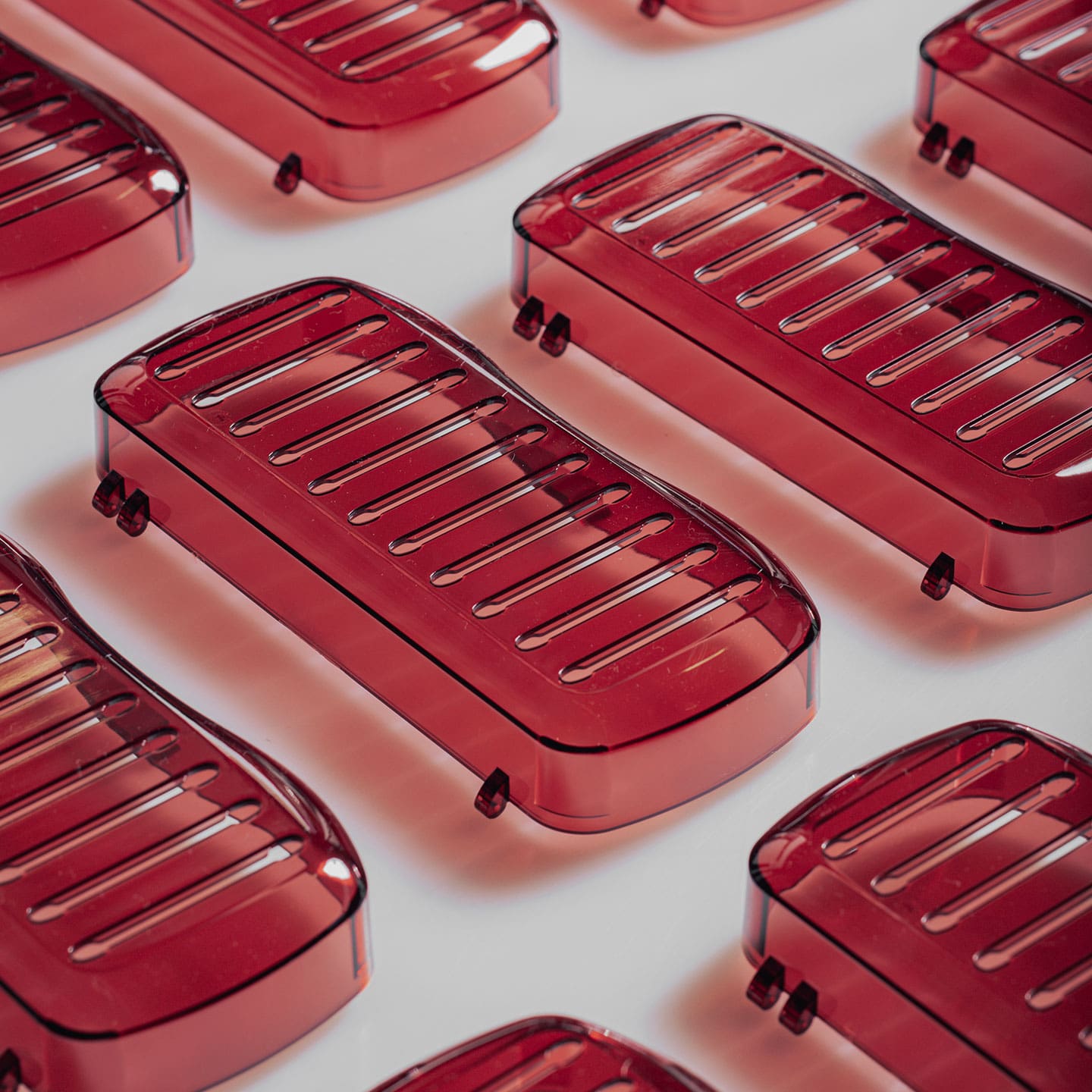Injection molding is an industrial production process used to produce products made of thermoplastic material. By means of a heating process, the material is melted (plasticized) and injected at high pressure into a closed mold that is opened after the material has solidified. The resulting product assumes the shape present inside the mold.

The mold
In order to produce a plastic product using the injecting molding technique, the first step is to create a mold.
It is important to evaluate various aspects before creating the mold:
- Productivity (definition of the number of cavities)
- The thermoplastic material used (for example PP, PE, ABS, PC, PPSU, PEEK etc.)
- Part geometry (thickness, dimensions, etc.)
- Method for extracting the product from the mold
- Type of injection The mold is formed of two parts, one called the die (female) and the other a punch (male).
When the press is opened the two parts of the mold separate, one remaining on a fixed surface and the other on the mobile surface of the press, making it possible for the product to exit the mold.

The injection press
Once the mold has been created, it is fit on an injection press to perform the molding process.
The press is comprised mainly of two parts:
- Injection unit
- Closure unit
The injection unit heats the raw material that is in the form of granules in order to melt it (plasticizing) and push it inside the mold.
Its two main components are:
- The hopper
- The cylinder
- The screw
- The nozzle
The closure unit makes it possible to keep the mold closed and counter the pressure generated by the injection unit as well as to permit the subsequent extraction of the product from the mold.
The closure unit is comprised of:
- Fixed surface
- Mobile surface
- Closing/opening system
- Extraction system

Injection molding process
The granule enters the cylinder through the hopper, the screw retracts, which makes the granule melt and position itself in the front part of the cylinder in the quantity determined by the dosing set on the press.
The granules are heated from the initial area to the final area inside the cylinder and made to melt by a series of heating rods and as a result of the friction generated by the screw. When the loading phase is complete, the press is in the mold closed position and can start the injection phase.
A nozzle is fit on the end of the cylinder that transfers the material, which is pushed by the screw, through a hole in the fixed surface of the machine into the mold.
The injection phase is divided into a first quick filling part, until reaching approx. 98% of the weight of the part and a second completion part to reach 100% of the weight, during which the material is compacted and kept pressurized until the part solidifies.
Once the solidification and any additional cooling process is complete, the mobile surface of the press retracts and the mold opens, the product falls out of the mold as a result of the movement of the extraction system.
- Insights
Ippi and environmental labelling
Starting on January 1, 2023, Italian legislative decree no. 116 of 3 September 2020 comes into force that introduces the environmental labelling requirement for all packaging released for consumption in Italy.

